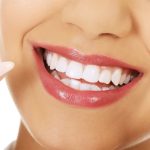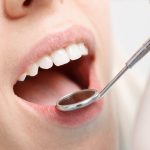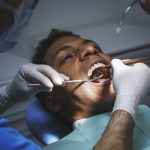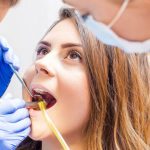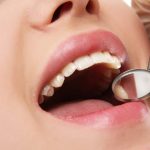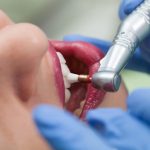When Do You Start Losing Teeth? Understanding the Natural Process of Tooth Loss

As we grow up, we witness several physical transformations taking place in our bodies. One of the most common phenomena that we all experience is the loss of baby teeth, which gets replaced by a full set of permanent teeth. While this process may seem natural, it can often leave us with several questions and concerns. Understanding the process of tooth loss is crucial to ensure proper oral health. The process of losing baby teeth, also known as primary teeth, is a natural and essential part of a child’s development. Typically, children start losing their baby teeth around the age of 6 or 7, when their permanent teeth begin to grow. The process continues until the age of 12 or 13 when all the baby teeth are replaced by adult teeth. However, the process of tooth loss can vary from child to child, and it is essential to understand the factors that contribute to it.
Tooth loss is a natural process that occurs when the teeth become loose and fall out or are extracted from the socket. This can happen due to a variety of reasons, including poor oral hygiene, gum disease, trauma to the tooth, or aging. As we age, our teeth become weaker and more prone to damage, making them more likely to fall out. Additionally, poor oral hygiene or gum disease can cause the gums to recede, exposing the roots of the teeth and making them more susceptible to decay and damage. In some cases, tooth loss may be necessary to prevent further damage or infection, but it is always important to take steps to maintain good oral health and prevent tooth loss whenever possible.
Understanding the natural process of tooth loss is crucial to maintaining good oral health. This process begins with the eruption of the first set of teeth in childhood and continues throughout a person’s life. Factors such as genetics, age, and oral hygiene practices can all contribute to the loss of teeth. By understanding the natural process of tooth loss, individuals can take steps to prevent premature tooth loss and maintain healthy teeth and gums. Regular dental check-ups, proper oral hygiene practices, and a healthy diet can all help to reduce the risk of tooth loss and ensure a healthy smile for years to come. It is also important to seek dental care promptly if any signs of tooth loss or damage are noticed, as early intervention can often prevent further damage and preserve the affected tooth. Overall, understanding the natural process of tooth loss is essential for maintaining good oral health and a beautiful smile.
Primary Teeth

Primary teeth, also known as baby teeth or deciduous teeth, are the first set of teeth that develop in humans. These teeth are essential for a child’s growth and development, as they help in several key functions, including chewing, speaking, and maintaining the space for permanent teeth to grow. Children usually have 20 primary teeth, which start to emerge at around six months of age and continue to come in until the child is about two years old. These teeth are generally smaller and whiter than permanent teeth and have thinner enamel, making them more prone to cavities and decay. It is crucial to take good care of primary teeth to ensure healthy growth and development and set the stage for strong and healthy permanent teeth in the future. Primary teeth start to fall out when a child is around six years old, making way for the eruption of permanent teeth. This process is known as exfoliation, and it continues until the child is about twelve or thirteen years old. The roots of primary teeth slowly dissolve, and the teeth become loose, allowing the permanent teeth to push them out. The process of losing primary teeth can be both exciting and scary for children, as they may experience discomfort and anxiety during this time. However, it is essential to reassure them that losing teeth is a natural process and that their permanent teeth will soon grow in, making their smiles even more beautiful. Parents should encourage good oral hygiene habits from an early age to ensure healthy primary teeth and help their children navigate this exciting and transformative time in their lives.
The eruption of primary teeth, also known as baby teeth, is a crucial milestone in the dental development of infants. Generally, the first primary tooth emerges at around six months of age, and by age three, most children have a full set of 20 primary teeth. The eruption of primary teeth plays a significant role in speech development, facial structure, and the ability to chew food. Moreover, it is essential to maintain good oral hygiene practices from an early age to prevent tooth decay and gum disease, which can lead to early tooth loss. While primary teeth are temporary, they serve as placeholders for permanent teeth and aid in their proper alignment and development.
Primary teeth, also known as baby teeth or milk teeth, start to fall out around the age of six or seven, although this can vary from child to child. The process of losing primary teeth is a natural and normal part of a child’s development, as the roots of the baby teeth are resorbed by the body and replaced by adult teeth. This can sometimes cause discomfort for the child, but it is important to encourage them to wiggle their loose teeth gently and let them fall out on their own, as this can help to prevent complications and ensure that the adult teeth come in correctly. It is also important to maintain good oral hygiene during this time, as the adult teeth will need to last a lifetime.
Primary teeth, also known as baby teeth, play a crucial role in the development of permanent teeth. These primary teeth act as placeholders for the permanent teeth, ensuring that they grow in the correct position and alignment. If a baby tooth is lost prematurely, it can cause the surrounding teeth to shift, resulting in a misaligned bite and potential orthodontic issues in the future. Additionally, primary teeth aid in speech development, help children chew their food properly, and contribute to a child’s overall oral health. It’s important to care for primary teeth properly, as neglecting them can lead to decay and infection, which can have lasting effects on the development of permanent teeth.
Permanent Teeth

Permanent teeth, also known as adult teeth, begin to develop during childhood and typically replace the primary teeth by the age of 12 or 13. These teeth are designed to last a lifetime and are much stronger and more durable than the baby teeth they replace. Unlike primary teeth, permanent teeth do not have a natural replacement mechanism, so it’s crucial to take care of them properly. The permanent teeth consist of 32 teeth, including four wisdom teeth that may or may not erupt. The teeth are divided into four quadrants, with each quadrant consisting of eight teeth. The teeth are made up of different parts, including the crown, neck, and root. They are anchored in the jawbone by the root, which is covered by gum tissue. The crown is the visible part of the tooth that we see in the mouth, while the neck is the region between the crown and the root. It’s essential to take care of the permanent teeth by practicing good oral hygiene habits, such as brushing and flossing regularly, visiting the dentist for routine checkups and cleanings, and avoiding sugary foods and drinks. By taking care of the permanent teeth, individuals can maintain a healthy and beautiful smile for a lifetime.
Permanent teeth typically begin to erupt between the ages of 6 and 12 years old, as the primary or baby teeth are gradually replaced. The order and timeline of eruption can vary from person to person, but generally, the first permanent teeth to erupt are the molars at the back of the mouth, followed by the incisors, canines, and premolars. As these teeth come in, they push the primary teeth out of the way, and the roots of the primary teeth dissolve, causing them to become loose and eventually fall out. This natural process of tooth loss and replacement is an important part of dental development and ensures that the mouth has a healthy and functional set of teeth throughout life.
The natural process of tooth loss is a significant milestone in a child’s development, and it usually starts between the ages of 6 to 8 years old. This is the age when the permanent teeth begin to replace the primary teeth that have served their purpose. The first set of molars is usually the first to fall out, followed by the incisors, canines, and premolars. The process of tooth loss can take several years, and it is essential to maintain proper dental hygiene during this time to ensure the healthy development of the permanent teeth. Parents should encourage their children to brush and floss regularly and visit the dentist for regular check-ups to ensure that their child’s oral health is on track.
Permanent teeth are crucial to maintaining good oral health. They are designed to last a lifetime and play an essential role in biting, chewing, and speaking. Losing one or more permanent teeth can lead to a host of problems, including difficulty eating, speech impediments, and a compromised appearance. Missing teeth can also cause the remaining teeth to shift, leading to misalignment and potential issues with bite alignment. Furthermore, the loss of permanent teeth can increase the risk of oral infections, gum disease, and decay. It is, therefore, vital to take good care of permanent teeth through regular dental check-ups, proper oral hygiene, and healthy habits like avoiding sugary and acidic foods and drinks.
Causes of Tooth Loss

Tooth loss can occur due to various reasons, including poor dental hygiene, age-related wear and tear, and certain medical conditions. Poor oral hygiene is one of the most common causes of tooth loss. Neglecting to brush and floss regularly can lead to tooth decay and gum disease, which can ultimately result in tooth loss. Additionally, consuming a diet high in sugar and carbohydrates can increase the risk of tooth decay and gum disease. It is important to maintain good oral hygiene habits and consume a healthy diet to prevent tooth loss. Age-related wear and tear can also contribute to tooth loss. As we age, our teeth may become weaker and more susceptible to damage. The enamel on our teeth can wear away over time, making them more vulnerable to decay and damage. Additionally, our gums may recede as we age, which can expose the roots of our teeth and make them more vulnerable to decay and infection. It is important to take care of our teeth as we age and to visit the dentist regularly to monitor for any signs of damage or decay that could lead to tooth loss.
Decay and cavities are two of the most common dental problems that lead to tooth loss. Decay occurs when the hard outer layer of the tooth, the enamel, is damaged and the underlying dentin becomes exposed. This can happen due to poor oral hygiene, a diet high in sugary and acidic foods, or certain medical conditions. Cavities, on the other hand, are small holes that form in the teeth as a result of decay. If left untreated, decay and cavities can lead to infection, gum disease, and ultimately, tooth loss. It is important to maintain good oral hygiene and visit a dentist regularly to prevent or catch these issues early on.
Gum disease, also known as periodontal disease, is a common condition that affects the tissues surrounding and supporting the teeth. It is caused by bacteria in plaque, which can accumulate on teeth and gums if not properly removed through brushing and flossing. As gum disease progresses, it can lead to inflammation, bleeding, and eventually tooth loss. In addition to poor oral hygiene, risk factors for gum disease include smoking, genetics, and certain medical conditions such as diabetes. Regular dental check-ups and cleanings can help prevent and detect gum disease early on, allowing for prompt treatment and better outcomes.
Trauma or injury to the teeth can be a significant factor in tooth loss, particularly if the damage is severe. This can include fractures, cracks, or even complete avulsion (knocked-out teeth). In some cases, the damage may not be immediately apparent, but it can still lead to long-term problems such as infection or decay. If trauma or injury to the teeth occurs, it is essential to seek immediate dental attention to help prevent further damage and ensure the best possible outcome for the affected teeth. Proper treatment can help preserve the affected teeth and prevent tooth loss, so it is crucial to act quickly and seek professional care as soon as possible.
Genetic factors play an essential role in tooth loss, as they determine the strength and durability of our teeth. Certain genetic conditions can lead to weaker, more brittle teeth that are more prone to decay and damage, ultimately resulting in tooth loss. These conditions can be inherited from one or both parents and affect the structure and development of the teeth. Additionally, genetic factors can also impact the health of the gums and jawbone, which provide critical support for the teeth. Identifying and addressing genetic factors that contribute to tooth loss can help individuals take proactive steps to maintain their oral health and prevent premature tooth loss.
Prevention and Treatment
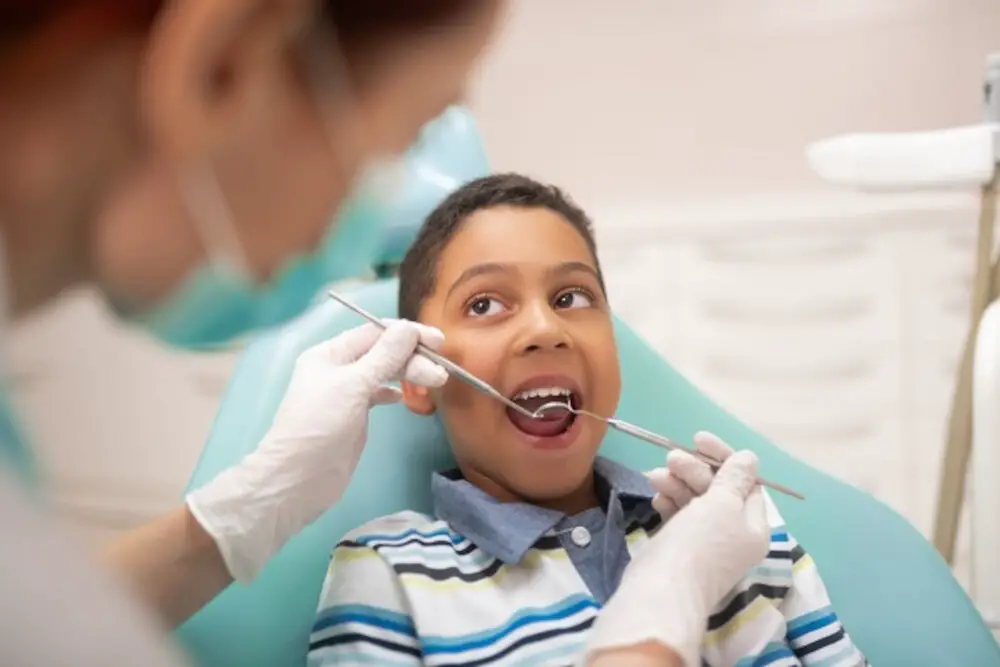
Preventing and treating tooth loss is essential to maintaining proper oral health. The first step in prevention is to maintain a regular oral hygiene routine that includes brushing and flossing twice a day. Additionally, visiting a dentist for regular checkups and cleanings is crucial in detecting and treating any potential issues before they progress. A healthy diet that is low in sugar and high in calcium and other essential nutrients is also crucial in maintaining strong teeth and preventing decay that can lead to tooth loss. If tooth loss does occur, there are several treatment options available. In cases where only one or two teeth are missing, dental implants or bridges may be recommended as a permanent solution. For more extensive tooth loss, dentures or partial dentures may be recommended. In some cases, orthodontic treatment may also be necessary to realign teeth and prevent further tooth loss. Regardless of the treatment option chosen, it is important to work closely with a dentist to ensure proper care and maintenance of the teeth and gums to prevent further issues from developing.
Proper oral hygiene practices are crucial for maintaining healthy teeth and gums. Brushing twice a day with fluoride toothpaste for two minutes each time is essential to remove plaque and prevent tooth decay. Flossing once a day helps to remove food particles and plaque from between teeth and along the gum line. Using mouthwash can also help to reduce bacteria and freshen breath. It is important to replace your toothbrush every three to four months, or when the bristles become frayed. Regular dental checkups and cleanings are also necessary to detect any potential issues before they become more serious. By taking care of your oral health, you can help to prevent tooth loss and maintain a healthy smile throughout your life.
Regular dental checkups and cleanings are essential for maintaining healthy teeth and gums throughout one’s lifetime. These visits allow dentists to identify and treat any potential issues before they become more severe, such as cavities, gum disease, or even tooth loss. During these appointments, the dentist will conduct a thorough examination of the mouth, clean the teeth and gums, and provide advice on proper oral hygiene techniques. Even individuals with no apparent dental problems should aim to schedule these appointments every six months to ensure optimal oral health. By prioritizing regular dental checkups and cleanings, individuals can prevent tooth loss and maintain a beautiful, healthy smile for years to come.
Tooth loss is a common problem, and fortunately, there are several treatment options available to address it, such as dental implants or dentures. Dental implants are a popular choice because they are a permanent solution that looks and feels like natural teeth. They are surgically implanted into the jawbone, where they fuse with the bone to create a stable foundation for a replacement tooth. Dentures, on the other hand, are removable appliances that can replace one or more missing teeth. They are made of acrylic resin and can be customized to fit snugly over the gums. While both options have their advantages and disadvantages, consulting with a dental professional can help you choose the best option for your individual needs.
Tooth loss is an inevitable part of the natural aging process. It typically begins in childhood with the shedding of baby teeth, which are gradually replaced by permanent teeth. Over time, the wear and tear of daily use, as well as other factors such as gum disease and tooth decay, can cause teeth to become weak and eventually fall out. Additionally, certain medical conditions and medications can also contribute to tooth loss. While losing teeth can be a difficult and sometimes painful experience, there are many options available to help restore the function and appearance of your smile, including dental implants, bridges, and dentures.
Taking care of oral health is essential in preventing tooth loss. Tooth loss can be caused by several factors, including poor oral hygiene, gum disease, and tooth decay. Regular brushing, flossing, and dental check-ups can help prevent these problems and maintain healthy teeth and gums. A balanced diet low in sugar and high in calcium and other essential nutrients can also help prevent tooth loss. It is important to address any dental issues promptly to prevent them from becoming more severe and leading to tooth loss. By taking care of oral health, one can enjoy a healthy smile and prevent the need for tooth replacement options such as dentures or dental implants.
It is crucial to seek professional dental care regularly to prevent tooth loss and maintain good oral health. Neglecting dental care can lead to various dental problems such as tooth decay, gum disease, and eventually tooth loss. Visiting a dentist is not only important when one experiences pain or discomfort, but also for routine dental check-ups and cleanings. These routine check-ups can help detect dental problems early before they progress into more serious issues. Additionally, regular dental cleanings can remove plaque and tartar build-up that can contribute to tooth loss. Seeking professional dental care can help individuals maintain their natural teeth for as long as possible, leading to a healthier and happier life.
Conclusion
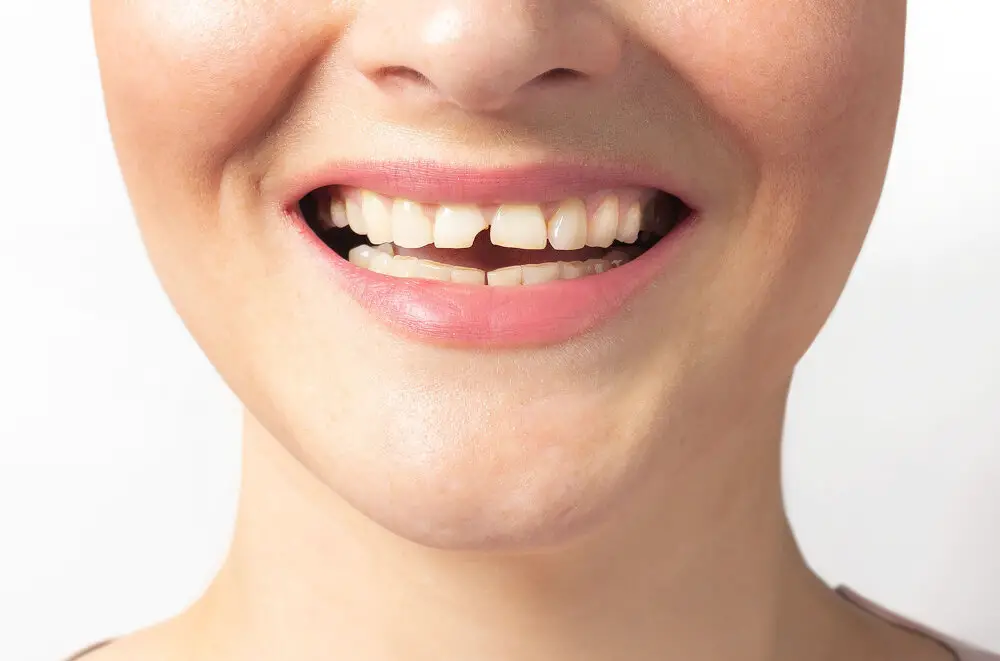
In conclusion, losing teeth is a natural process that occurs throughout our lives. While it may start as early as six years old with the loss of baby teeth, it is not uncommon for adults to experience tooth loss as well. Understanding the reasons behind tooth loss can help us better care for our teeth and prevent premature loss. Good oral hygiene, regular dental check-ups, and a healthy diet can all play a role in maintaining strong and healthy teeth. And if tooth loss does occur, modern dental technology offers a variety of solutions to restore our smiles and improve our quality of life. So let’s embrace the natural process of tooth loss with knowledge, care, and optimism for the future.

